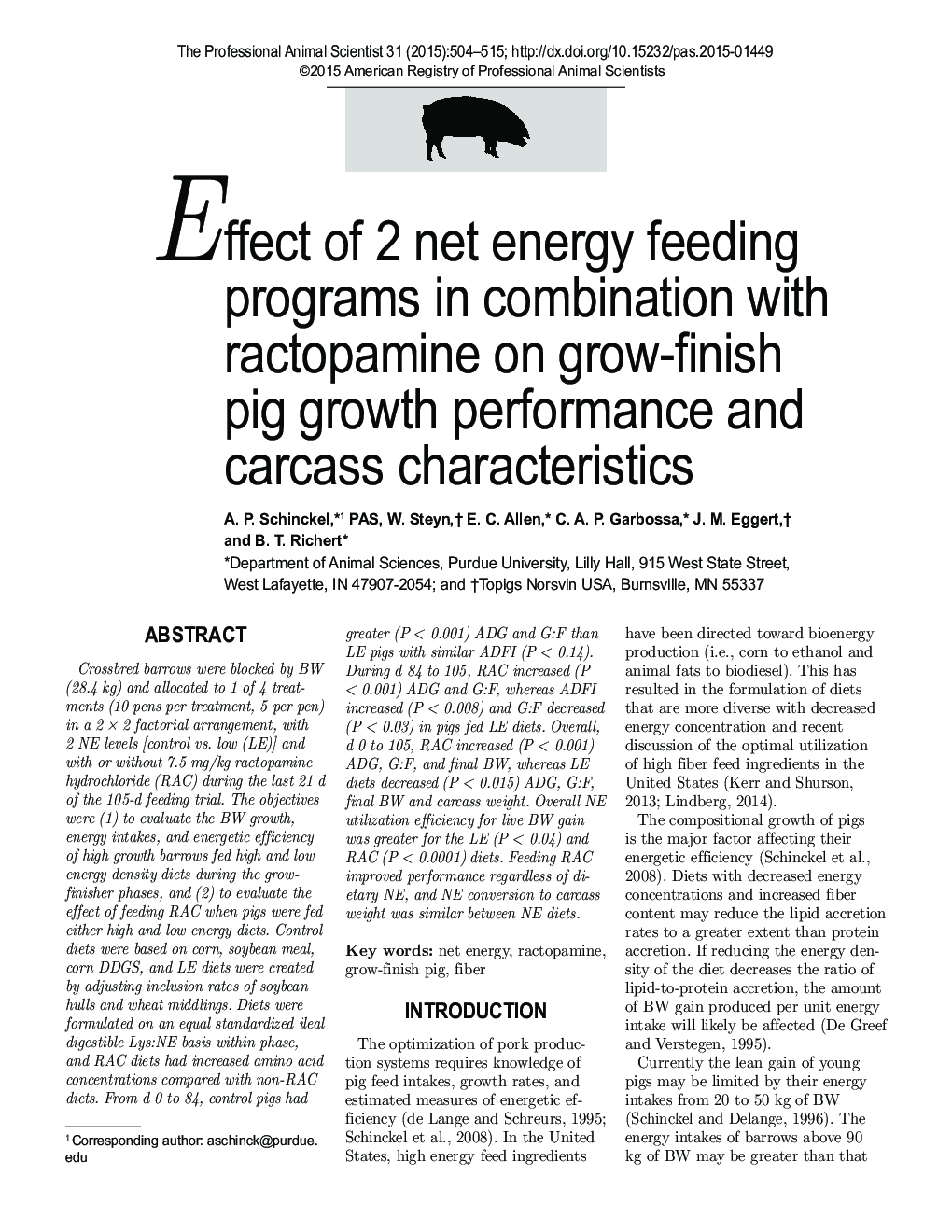| Article ID | Journal | Published Year | Pages | File Type |
|---|---|---|---|---|
| 2453788 | The Professional Animal Scientist | 2015 | 12 Pages |
Abstract
Crossbred barrows were blocked by BW (28.4 kg) and allocated to 1 of 4 treatments (10 pens per treatment, 5 per pen) in a 2 Ã 2 factorial arrangement, with 2 NE levels [control vs. low (LE)] and with or without 7.5 mg/kg ractopamine hydrochloride (RAC) during the last 21 d of the 105-d feeding trial. The objectives were (1) to evaluate the BW growth, energy intakes, and energetic efficiency of high growth barrows fed high and low energy density diets during the grow-finisher phases, and (2) to evaluate the effect of feeding RAC when pigs were fed either high and low energy diets. Control diets were based on corn, soybean meal, corn DDGS, and LE diets were created by adjusting inclusion rates of soybean hulls and wheat middlings. Diets were formulated on an equal standardized ileal digestible Lys:NE basis within phase, and RAC diets had increased amino acid concentrations compared with non-RAC diets. From d 0 to 84, control pigs had greater (P < 0.001) ADG and G:F than LE pigs with similar ADFI (P < 0.14). During d 84 to 105, RAC increased (P < 0.001) ADG and G:F, whereas ADFI increased (P < 0.008) and G:F decreased (P < 0.03) in pigs fed LE diets. Overall, d 0 to 105, RAC increased (P < 0.001) ADG, G:F, and final BW, whereas LE diets decreased (P < 0.015) ADG, G:F, final BW and carcass weight. Overall NE utilization efficiency for live BW gain was greater for the LE (P < 0.04) and RAC (P < 0.0001) diets. Feeding RAC improved performance regardless of dietary NE, and NE conversion to carcass weight was similar between NE diets.
Keywords
Related Topics
Life Sciences
Agricultural and Biological Sciences
Animal Science and Zoology
Authors
A.P. PAS, W. Steyn, E.C. Allen, C.A.P. Garbossa, J.M. Eggert, B.T. Richert,
